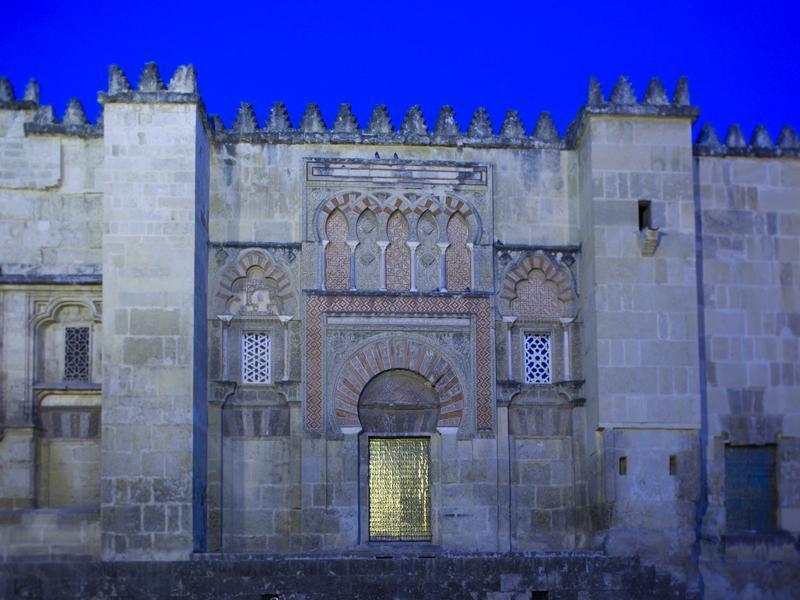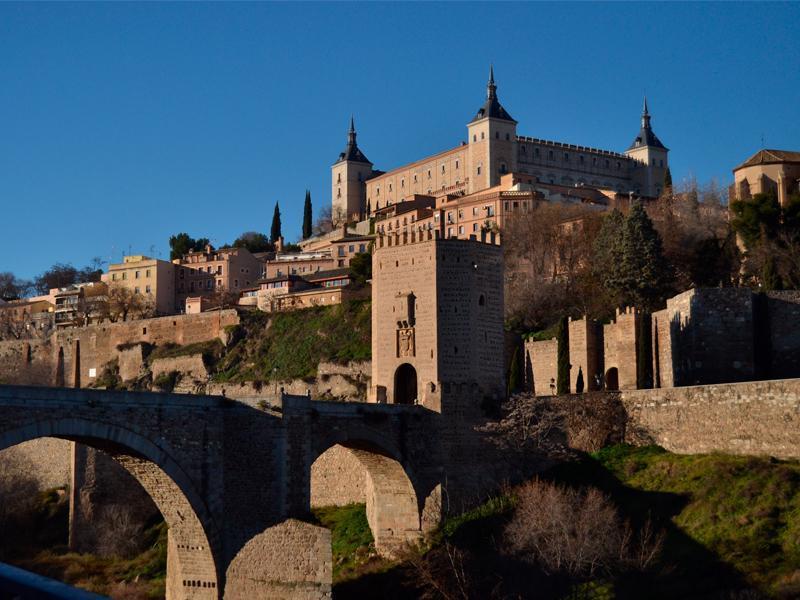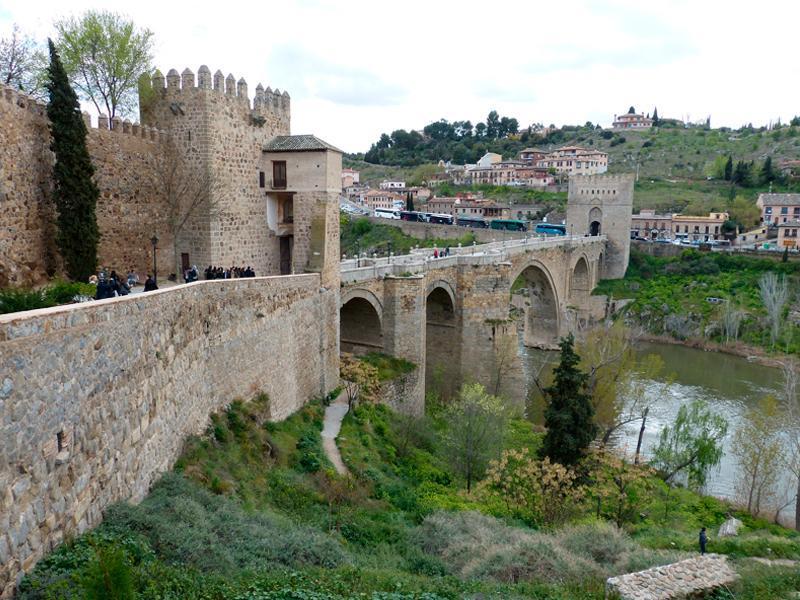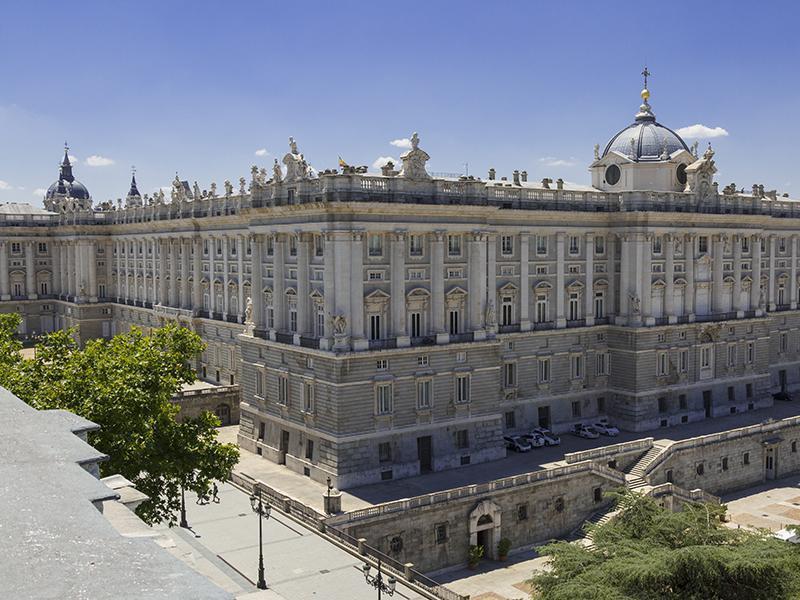
Madjrit, al-Andalus’ Madrid
(Part I)
Madrid once belonged to al-Andalus. Scarcely 150 years after Tarik disembarked on the Iberian Peninsula, Muhammad Ibn Abd-er-Rahman al-Awsat, emir of Córdoba, decided to build a wall around Madjri t .
From then on, Abd-er-Rahman II’s son, Muhammad I will appear in every history book as the founder of this noble city of al-Andalus, as geographer al-Himyari stated.
In the South of Spain, people quite often feel proud of their al-Andalus past, considering such a heritage an undeniable benefit of our historic past. As a Madrid native and author of a novel inspired in Islamic Madrid, I wonder: Why then do we, people from Madrid, not feel equally proud of that Islamic past that compares us with the grandeur of Cordoba, Toledo or Granada?
Madrid must not have been different from other cities of al-Andalus. Located close to the Iberian Peninsula’s Marca Media (middle border area) Madjrit was built as a frontier, and hence, defensive city. In my novel Maŷritentre dos murallas(Madjrit between two walls), I recreate the atmosphere of what Madrid might have been like back in the 11th century: “Madjritwas not as untidy and mature a city as Cordoba was. It was a young city. Nobody was making sure of cleaning the streets, dirty with the excrement of horses and camels. No one established order in the market, not even the almotacén, (public employee in charge of controlling weights and measures) because it was obvious that there were none”.

West façade of the Mosque-Cathedral, in Córdoba. @Xurxo Lobato
In that way, hustle and bustle of Madjrit became “the voices in the markets of flint and wood, bricklayers’ shouts giving correcting instructions at the building sites, of carts drawn by oxen, bellowing as they were whipped, cries from injured workers, oppressed by the huge and uneven stones; from the water carriers who announced that they had water to be provided to the thirsty workers.”
But… how is that Muhammad I chose Madrid to raise a wall?

View of Toledo. In the foreground the Alcántara Bridge and in the background the Alcázar.
View of Toledo. In the foreground the Alcántara Bridge and in the background the Alcázar.

According to Manuel Montero Vallejo, there are three key factors traditionally invoked: the function of surveillance, the defence of Toledo and its quality as ribat. Cristina Segura goes further and states: “Taking this into account, Madrid’s origin was due to the defence against the northern kingdoms. Yet it should not be forgotten that Córdoba’s enemies were also the muladis (Christians converted to Islam) and mozarabs (Christians living in the Hispano-Muslim society keeping their religion and costumes) from the Marca Media, mainly those from Toledo. The location of Madrid to the north of Toledo would make it an important focus of control in avoiding future alliances between them and the Christians from the north, with whom there is no doubt they had a greater communication than with those from Cordoba.”
While Christians did not start to raise important walls until the end of the 11th and 12th centuries, Muslims brought along their technique from the East and introduced it in their daily life. Words as atalaya (watchtower), castillo (castle), fortaleza (fortress) of Arabic origin, stayed in the Spanish lexicon to the end of those centuries, which shows the defensive capacity that the new settlers had.
Everything previously said leads us to the same conclusion, which is none other than that presented by Fernando Valdés Fernández in Maŷrit, estudios de arqueología medieval madrileña (Madjrit, studies on Madrid medieval archaeology): “It is known that in Islamic times, at least, there was a settlement that had risen to the level of a city─madinat─ by the fact that it was enclosed by walls”. […] “It is, ultimately, a legal matter: whoever fortifies a village turns it into a city, founds it as a city.”
The theories that investigate a Madrid of Roman origins cannot be maintained before so many and categorical proofs of Muslim origin. It is certain that before the Arabs were in the lands of Madrid, Romans had settlements (villae), whose vestigial remains have been found in Casa de Campo and in the municipality of Barajas. However, they are only small pieces with poor documentary value.
The theory of a Roman Madrid is not justified, at least from an archaeological point of view, and we already know that the story of history is written by archaeologists, the only ones who can testify to the life of the past.

Façade of the Palacio Real. Madrid.
Inside and outside of Madrid, Muslims built and fortified. Inside theal-mudayna, that is to say, the fortified area, a military residence was built. It hosted approximately 2,500 people who were not only military but also professionals related to the military life, such as carpenters, blacksmiths or stable grooms, who eased the life of the emir’s subjects very much.
By Carolina Molina.
is a journalist and author of historic novel
Bibliography:
SEGURA, Cristina. El origen islámico de Madrid y las relaciones con los reinos cristianos.
RETUERCE VELASCO, Manuel. “Testimonios materiales del Madrid andalusí. Testimonios del Madrid Medieval (El Madrid musulmán)”. Serie de cursos y conferencias. Museo de San Isidro, Madrid 2002.
MONTERO VALLEJO, Manuel. El Madrid Medieval. Ed. La Librería, Madrid, 2003.
Maŷrit. Estudios de arqueología medieval madrileña. Edición de Fernando Valdés. Ediciones Polifemo, Madrid 1992.
Las murallas de Madrid. Arqueología medieval urbana. Monografías de Patrimonio Histórico. Ediciones Doce Calles, Madrid 2003.
GEA ORTIGAS, María Isabel. Los viajes de agua de Madrid. Ediciones La Librería. Madrid, 1999.
MOLINA, Carolina.Maŷrit entre dos murallas. Entrelineas Editores. Madrid, 2004
http://www.madridmedieval.com
